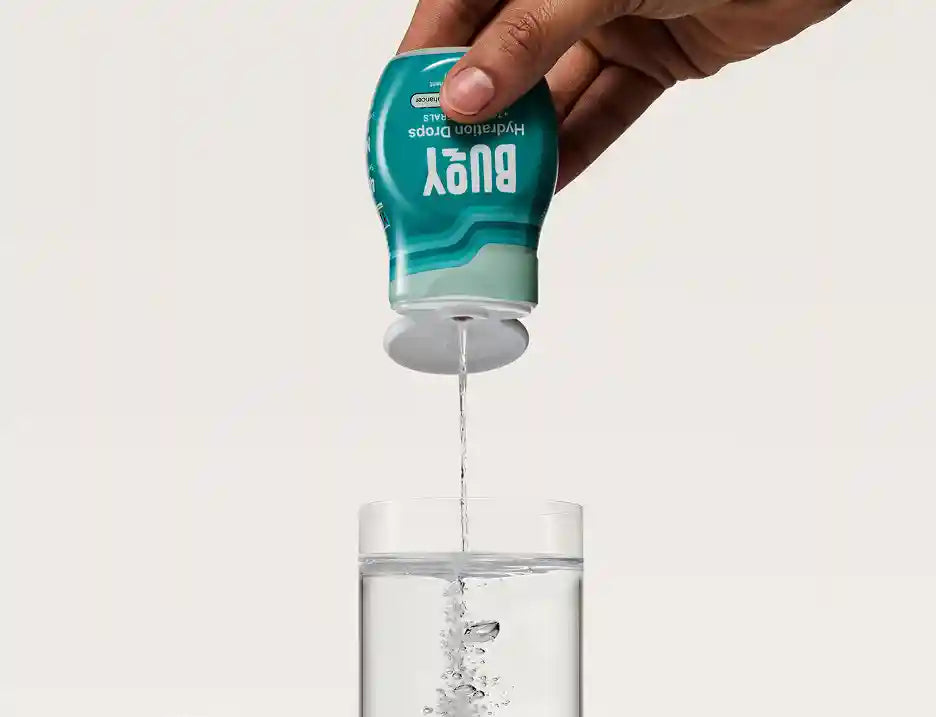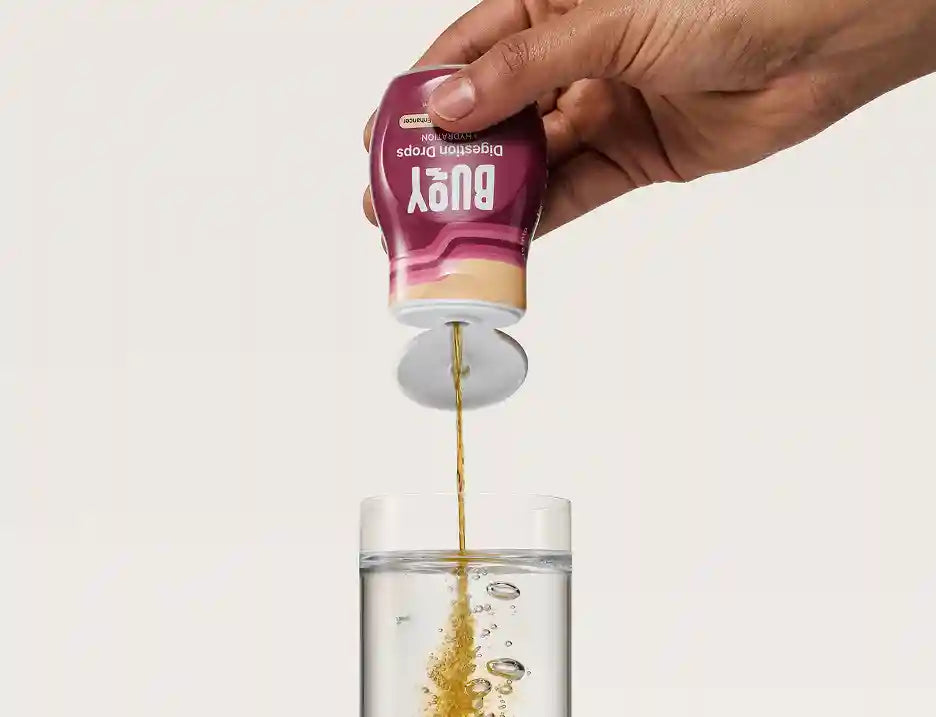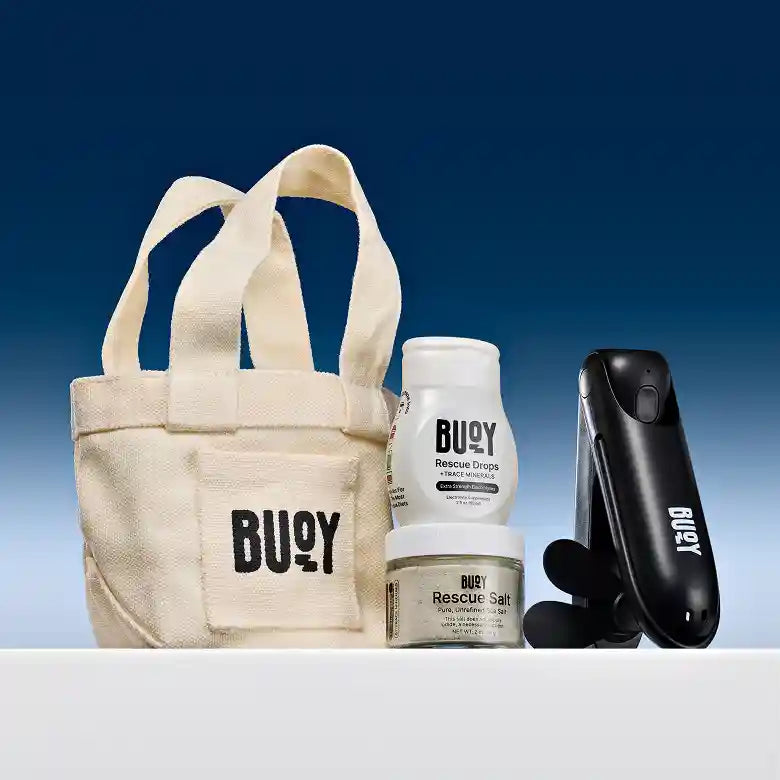
What Does Clean Label Really Mean When It Comes to Electrolytes?
Share
“Clean label” has become one of the most used and most misunderstood phrases in wellness. From protein powders to hydration drinks, brands claim purity and transparency. But when you look closer, many “clean” electrolyte products still include artificial sweeteners, unnecessary additives, or marketing-driven formulations that do little for real hydration.
So what does clean label actually mean when it comes to electrolytes and how does Buoy fit in?
Key Takeaways
- “Clean label” means transparency, minimal processing, and the absence of hidden additives.
- Most electrolyte drinks include sugar or artificial ingredients that slow absorption or irritate digestion.
- Scientific studies show that balanced, low-sugar electrolyte solutions improve hydration efficiency.
Let’s unpack the science, the standards, and the differences between products that just sound clean and those that genuinely are.
- Why Electrolytes Matter and Why Buoy Takes a Different Approach
- What Does “Clean Label” Really Mean?
- The Problem With “Performance” Electrolytes
- The Science of Hydration and “Clean” Formulation
- Hidden Additives and Why They Matter
- Clean Label Electrolytes and Digestive Health
- Comparing Sugar, Additives & Transparency
- What to Look For on a “Clean” Electrolyte Label
- Why Buoy Sets the Standard
Why Electrolytes Matter (and Why Buoy Takes a Different Approach)
Electrolyte minerals like sodium, potassium, magnesium, and chloride, help regulate nearly every essential body function: hydration, nerve signaling, muscle function, and digestion [1]. When levels drop, so does performance. But restoring them effectively isn’t as simple as grabbing any “hydration” packet on the shelf.
Most electrolyte drinks are built for sports performance, not everyday balance. They’re often loaded with sugar, artificial colors, and synthetic flavors that mask the mineral taste.
That’s where Buoy’s Digestion Drops come in. They’re designed for daily hydration support, restoring electrolytes without sugar, fake flavoring, or unnecessary fillers. Instead of powders or syrups, Buoy delivers a pure liquid concentrate with trace minerals and zero artificial additives. It’s hydration that aligns with clean label principles. Simple, transparent, and science-based..
What Does “Clean Label” Really Mean?
There’s no official legal definition for “clean label,” but most nutrition scientists and industry and regulatory bodies agree it’s about ingredient transparency, minimal processing, and consumer trust [5].
A clean label product avoids hidden chemicals, controversial preservatives, or synthetic coloring. It also clearly discloses every ingredient, uses plain language, and keeps formulations simple.
According to the Clean Label Project, it’s not just about what’s in your product, it’s about what’s not in it: heavy metals, pesticides, microplastics, and other contaminants that can accumulate through processing and packaging [6].
In short, “clean label” means no unnecessary extras and full transparency about what you’re putting in your body.
The Problem With “Performance” Electrolytes
Electrolyte drinks were originally designed for endurance athletes. Their formulas prioritized carbohydrates and glucose as fuel, not just hydration. The problem is that many of those formulations stuck around long after most users stopped running marathons.
A quick glance at popular brands, including Liquid I.V., Gatorade Zero, LMNT, and Nuun, shows how “hydration” can easily cross into “processed.”
Some use artificial sweeteners like sucralose or stevia to reduce sugar but maintain sweetness. Others use flavor masking agents, stabilizers, or synthetic colors to make their mixes palatable.
That’s why clean labels matter: the goal should be hydration, not hidden additives.
|
Category |
Buoy Digestion Drops |
Other Electrolyte Products |
|
Sugar Content |
Contains zero sugar—relies on natural electrolytes for taste and function. |
Often includes 7–10g sugar per serving (Liquid I.V., Gatorade). |
|
Sweeteners |
No artificial or natural sweeteners - no sucralose, stevia, or monk fruit. |
Frequently include sucralose or stevia to maintain sweetness. |
|
Additives |
Free from dyes, fillers, and stabilizers. |
Many contain maltodextrin, anti-caking agents, or flavor masking ingredients. |
|
Trace Minerals |
Contains natural sodium, potassium, magnesium, chloride, and zinc for hydration and digestion. |
Most focus only on sodium and potassium, leaving out trace minerals. |
|
Clean Label Transparency |
Discloses all ingredients, with no proprietary blends. |
Often hides formulation details behind “proprietary electrolyte matrix.” |
The Science of Hydration and “Clean” Formulation
Clean label doesn’t mean minimalist. It means functional without compromise.
Research shows that hydration depends not just on drinking water, but on how well electrolytes help the body absorb it [2][3]. Electrolyte balance affects osmolality - the movement of water across cell membranes.
Excess sugar or sodium can make a drink more concentrated, slowing how quickly it empties from the stomach and is absorbed. Clean formulations, like Buoy’s hypotonic liquid design, optimize this balance for rapid hydration without the sugar spike or crash [2].
A 2021 study on the Beverage Hydration Index found that drinks containing balanced electrolytes (sodium, potassium, magnesium) without excess sugar retained fluids better in resting adults than water alone [3].
In short, the science supports what clean label advocates have said all along: simplicity works.
Hidden Additives and Why They Matter
Even products labeled “sugar-free” can hide behind other ingredients.
Artificial sweeteners like sucralose or aspartame may alter gut microbiota and glucose metabolism over time, according to several studies reviewed by the Cleveland Clinic [4]. Similarly, artificial colors and stabilizers have been linked to minor digestive issues and increased inflammation in sensitive individuals.
That’s why Buoy focuses on clean, traceable inputs:
- No artificial sweeteners or sugar alcohols
- No coloring agents or masking flavors
- No binding fillers or preservatives
It’s hydration stripped back to what your body actually needs. Nothing else.
Clean Label Electrolytes and Digestive Health
Here’s where Buoy’s Digestion Drops set themselves apart. Beyond basic hydration, they’re formulated to support digestion with trace minerals that help balance gut pH and improve nutrient absorption.
Electrolytes like magnesium and chloride play key roles in producing stomach acid and supporting peristalsis (the muscle contractions that move food through your system). Clean electrolytes, free from irritants like artificial sweeteners, are less likely to disrupt this natural rhythm.
So when you take Buoy’s Digestion Drops, you’re not only supporting hydration. You’re supporting the system that helps your body use the nutrients it takes in.
Comparing Sugar, Additives & Transparency
|
Metric |
Buoy Digestion Drops |
Average Electrolyte Drink |
|
Added Sugar (per serving) |
0g |
7–10g |
|
Artificial Sweeteners |
None |
Common (sucralose, stevia, monk fruit) |
|
Transparency |
Full ingredient disclosure |
Often uses “proprietary blend” labelling |
|
Trace Mineral Spectrum |
Sodium, Potassium, Magnesium, Chloride, Zinc |
Typically only Sodium and Potassium |
|
Clean Label Certification / Standards |
Meets Clean Label Project criteria; third-party tested for heavy metals and microplastics |
Rarely tested or publicly certified |
What to Look For on a “Clean” Electrolyte Label
Not every “clean” product lives up to the word. When comparing electrolyte brands, read labels carefully and look for:
-
No hidden sugars. “Cane juice,” “glucose syrup,” and “organic sugar” still count.
-
No artificial sweeteners or colors. Words like “acesulfame potassium” or “FD&C Blue 1” are red flags.
-
Full ingredient disclosure. Avoid vague “proprietary blends.”
-
Traceable minerals. Electrolytes should include sodium, potassium, magnesium, and chloride, not just sodium.
- Third-party testing. Look for heavy metal testing or Clean Label Project verification.
If a brand doesn’t disclose ingredient sourcing or testing, it’s not truly clean.
Why Buoy Sets the Standard
Buoy takes a holistic approach to clean hydration. Our Digestion Drops aren’t just electrolyte supplements. They're an answer to the ultra-processed hydration problem.
Buoy’s formula skips the sugar and flavor additives entirely, focusing on raw functionality. The drops are also:
- Vegan and allergen-free
- Shelf-stable without preservatives
- Compatible with any drink (water, juice, coffee)
- Lab-tested for purity and microplastic safety
While other brands build their story around flavor or branding, Buoy builds it around what’s not in the bottle. That’s what a clean label really means - Hydration without compromise.
References:
- Sobotka L. Water and electrolytes in health and disease. Clinical Nutrition ESPEN. 2008. https://www.clinicalnutritionespen.com/article/S1751-4991%2808%2900048-6/fulltext
- Pérez-Castillo A, et al. Compositional aspects of beverages designed to promote rehydration after exercise. Nutrients. 2023. https://pmc.ncbi.nlm.nih.gov/articles/PMC10781183/
- Millard-Stafford M, et al. The Beverage Hydration Index: Influence of electrolytes on fluid retention in resting humans. American Journal of Clinical Nutrition. 2021. https://pmc.ncbi.nlm.nih.gov/articles/PMC8465972/
- Cleveland Clinic. Are Electrolyte Drinks Beneficial or Not? 2023. https://health.clevelandclinic.org/electrolyte-drinks-beneficial-or-not
- Chauhan V, et al. Clean-Label Alternatives for Food Preservation: An Emerging Trend. Frontiers in Nutrition. 2024. https://pmc.ncbi.nlm.nih.gov/articles/PMC11379619/
- Clean Label Project. About the Clean Label Standard. 2024. https://cleanlabelproject.org/




